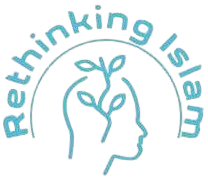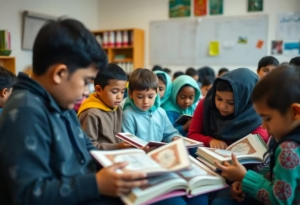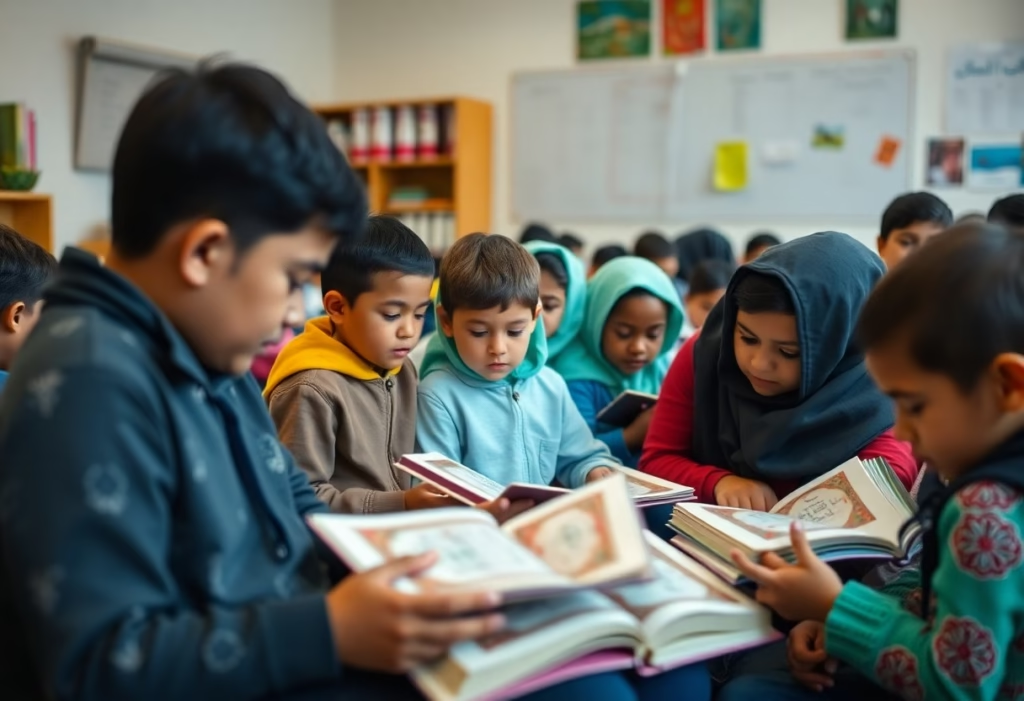You may be surprised to learn that the methods by which children learn the Qur’an today have evolved significantly. With the use of modern technology like apps and online classes, learning has become more accessible and engaging. However, this shift also presents challenges, such as maintaining focus and dedication amidst distractions. Understanding these transformative approaches can help you find the best way to support your child’s journey in grasping the teachings of the Qur’an, blending traditional values with contemporary learning techniques.
The Evolution of Qur’anic Education
The landscape of Qur’anic education has undergone significant transformation over the years. Historically, memorization dominated the teaching methods, with students often engaging in intensive, repetitive recitation. This traditional approach focused heavily on oral transmission, but as society evolved, so did the techniques used to impart knowledge. Today’s Qur’anic education incorporates a blend of modern pedagogical theories and practices, emphasizing comprehension and application alongside memorization, thus catering to diverse learning styles.
From Traditional Memorization to Modern Techniques
Transitioning from rote memorization, contemporary Qur’anic education employs interactive methods that support deeper understanding. You might find techniques such as group discussions, storytelling, and visual aids being utilized, all aimed at making the material relatable and engaging. These modern approaches not only foster retention but also encourage critical thinking and allow for a personal connection with the text.
The Impact of Technology on Learning Methods
Technology has revolutionized the approach to Qur’anic education, providing a plethora of resources that enhance the learning experience. Online platforms, mobile applications, and multimedia tools have made it easier for students to engage with the Qur’an beyond traditional classrooms. You can access audio recitations, video tutorials, and interactive quizzes at your convenience, which have collectively improved accessibility and personalized learning.
The integration of technology has opened unprecedented avenues for Qur’anic education, especially for younger generations who thrive in digital environments. For instance, platforms like Quran Companion and Learn Quran Tajwid leverage gamification, turning learning into an engaging experience. These resources often include progress tracking and community features, which foster a supportive learning atmosphere. With over 3 million downloads, such applications illustrate how technology caters to modern learners and enhances their Qur’anic journey, making it both effective and enjoyable.
Cultural Influences Shaping Qur’anic Learning
The approach to learning the Qur’an is profoundly influenced by various cultural contexts. In many regions, local traditions intertwine with Islamic practices, shaping not only how the Qur’an is taught but also how it is perceived. For instance, in some cultures, festive gatherings for recitation encourage a communal atmosphere, whereas in others, a more formal and structured setting prevails. This interplay of culture and education results in unique learning experiences tailored to the values and norms of each community, creating a rich tapestry of Qur’anic learning across different societies.
Regional Variances in Teaching Approaches
Your location can significantly impact the methods used to teach the Qur’an. In Southeast Asia, for example, you might encounter techniques that incorporate both modern educational practices and traditional memorization, often aided by technology. In contrast, the Middle East may emphasize oral traditions that have been passed down for generations, focusing on recitation and memorization in a classroom setting. Each region’s approach not only reflects local educational philosophies but also the cultural significance ascribed to the Qur’an.
The Role of Community and Family in Learning Processes
Your family and community play an integral part in shaping how you and others learn the Qur’an. In many households, Qur’anic memorization becomes a shared family endeavor, demonstrating the social aspect of learning. Celebrations are often held to commemorate milestones, deepening the sense of connection and commitment to the study of the Qur’an. In these settings, elders frequently guide you through the learning process, passing down both knowledge and reverence for the text itself, thus reinforcing its significance in your daily life.
Community engagement enhances your learning experience even further. Many local mosques offer structured lessons and recitation groups, fostering a supportive environment where you can practice and seek clarification. These communal practices not only provide academic support but also create a sense of belonging and shared purpose. Strong family bonds are often reinforced through discussions around the Qur’an, allowing for deeper understanding and appreciation of its teachings. Ultimately, the collaborative nature of community and family involvement nurtures a holistic learning experience that transcends mere memorization.
Innovative Learning Tools Transforming Memorization
Today’s learning landscape for Qur’anic memorization is reshaped by innovative tools that engage and inspire young learners. Gone are the days of solely pen and paper; children now embrace interactive methods that resonate with their tech-savvy upbringing. From gamified learning experiences to interactive flashcards, these tools make memorization less daunting and more enjoyable. By blending education with play, you can enhance the learning experience, allowing your child to connect with the Qur’an in meaningful ways.
Mobile Apps and Online Platforms for Qur’anic Study
The emergence of mobile apps and online platforms has revolutionized how children engage with the Qur’an. Apps like Quran Companion and Learn Quran Tajwid offer interactive lessons and challenges that motivate children to stay consistent in their memorization efforts. With features such as progress tracking, audio recitations, and community support, these platforms cater to varied learning styles, helping to create personalized pathways to understanding and retaining the Qur’an.
The Effectiveness of Audio-Visual Aids in Retention
Audio-visual aids significantly enhance your child’s ability to retain Qur’anic verses. Using videos featuring recitations alongside text allows children to engage multiple senses while memorizing. This technique has been shown to improve recall; studies indicate that individuals who utilize both sight and sound may retain up to 60% more information than those relying on auditory input alone. Whether through animated storytelling of verses or captivating visual representations of concepts, these tools create memorable associations that linger long after the initial learning.
Psychological Insights into Memorization and Comprehension
Understanding the psychological mechanisms behind memorization is vital for enhancing Qur’anic learning. Various cognitive functions, such as attention, encoding, and retrieval, significantly impact how effectively you can memorize verses. Engaging multiple senses and utilizing spaced repetition techniques can strengthen memory retention. Additionally, creating meaningful connections with the material can lead to deeper comprehension, helping you not only to memorize but also to internalize the teachings of the Qur’an.
Cognitive Strategies Employed by Successful Learners
Successful learners often use tailored cognitive strategies to optimize their Qur’anic memorization. Techniques such as chunking, where large verses are broken down into smaller, manageable parts, allow for easier retention. Visualization, or associating verses with images, also helps reinforce the memorization process. Furthermore, employing mnemonics can create memorable shortcuts that aid recall, demonstrating that adapting various cognitive strategies can significantly boost your learning efficiency.
Overcoming Challenges: Emotional and Mental Barriers
Emotional and mental barriers can hinder your Qur’anic memorization journey. Stress, anxiety, and self-doubt often create roadblocks that affect your ability to concentrate and retain information. Recognizing these challenges is the first step towards overcoming them. Developing a positive mindset, practicing mindfulness techniques, and establishing a supportive environment can help alleviate these emotional weights, allowing you to focus on your spiritual and educational goals.
Addressing these emotional and mental barriers is vital for your success in Qur’anic memorization. Anxiety may manifest as a fear of failure or pressure to perform, often leading to avoidance behaviors. Consider incorporating relaxation techniques, such as deep breathing exercises or meditation, to calm the mind before study sessions. Joining supportive study groups can provide encouragement and shared experiences, creating a sense of community that fosters resilience. Additionally, celebrating small milestones along your memorization journey can help maintain motivation and combat self-doubt, paving the way for continued learning and spiritual growth.
Future Trends in Qur’anic Education
As Qur’anic education evolves, future trends are expected to reshape the learning landscape, enabling children to engage deeply with the text. Innovative teaching methods, including technology integration and community involvement, will foster a more dynamic learning atmosphere. The shift towards individualized approaches means each student can progress at their own pace, enhancing both understanding and retention of the Qur’an.
Integration of Personalized Learning Experiences
Personalized learning experiences will become a hallmark of Qur’anic education, allowing for tailored lesson plans that cater to the unique needs of each child. By utilizing adaptive learning technologies, you can assess your child’s mastery of different sections of the Qur’an, providing targeted instruction that aligns with their speed and style of learning.
The Role of Global Interconnectivity in Educational Practices
Global interconnectivity transforms how you access Qur’anic education, bringing resources and knowledge from around the world directly to your fingertips. With online platforms, you can join virtual classrooms with scholars and peers from diverse backgrounds, creating a rich tapestry of learning experiences.
The rise of online forums, discussion groups, and interactive webinars means that geographical barriers are becoming less relevant. You can now benefit from teachings by renowned scholars across the globe, participate in live Q&A sessions, and connect with fellow learners on a real-time basis. Collaborative projects and shared resources make it easier than ever to engage with others, enriching your understanding of the Qur’an through collective knowledge while exposing students to different perspectives and interpretations. This synergy fosters a more inclusive and supportive learning environment that transcends cultural barriers, leading to a more holistic understanding of the text.
Summing up
To wrap up, understanding how children learn the Qur’an today is vital for you as a parent or educator. You’ll find that modern approaches blend traditional memorization with engaging technology, ensuring that your child not only retains the verses but also internalizes their meanings. Utilizing resources such as apps, online classes, and interactive materials will support your child’s learning journey, making it both effective and enjoyable. By fostering a supportive environment, you can enhance your child’s connection to the Qur’an, nurturing a lifelong appreciation of its wisdom.


